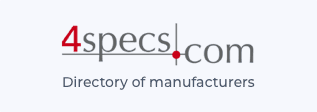Use this 3-part SimpleSpecs™ master specification to specify playground protective surfacing. Sometimes called playground safety surfacing consists of randomly sized debarked shredded hardwood fibers, geotextile, and wear mats.
Other types of protective surfacing are available, including poured-in-place resilient surfacing and resilient mats that have not been specified in this section.
A playground surface is a material that lies under and around swings, slides, monkey bars, and other playground equipment. The surfaces are usually made of wood or rubber and designed specifically for aesthetics, child safety, and/or ADA wheelchair accessibility. Playground safety surfacing often involves using recycled rubber tire products such as poured rubber, rubber tiles, or loose rubber mulch.
In the United States, as well as being safe, a playground surface should be firm enough to meet the requirements of the Americans with Disabilities Act, which means it must offer easy mobility for children in wheelchairs. Meeting these dual objectives limits the number of types of surfaces that responsible playground owners/operators can consider.
ASTM International has developed test method F1951 to evaluate compliance with the Americans With Disability Act (ADA). However, meeting the ADA’s requirements does not guarantee that all children with disabilities can use the playground equipment.
Other types of protective surfacing are available, including poured-in-place resilient surfacing and resilient mats.
Industry Association:
In the United States and Canada, the International Play Equipment Manufacturers Association (IPEMA) provides a third-party certification service enabled by appointing a testing laboratory to determine if a particular surface conforms to ASTM standards F1292, F1951, and F2075.
IPEMA’s seal on a provider’s document is clear evidence that the covered material has met these tests. Owner/operators should request a copy of this certification for their protection. Some suppliers do not offer proof of certification, and mere membership in IPEMA does not mean that a particular supplier’s material has been certified.
Related SimpleSpecs™ master specifications:
32 23 00 – Excavation and Fill

